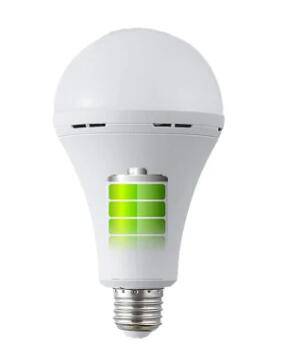Illuminating the Green Path: How LED Bulbs Brighten the Future by Reducing Carbon Emissions
2023-12-22
Introduction:
In the global pursuit of sustainable living, small changes in our daily choices can have a profound impact. One such change that has garnered attention for its significant environmental benefits is the widespread adoption of LED bulbs. Beyond the immediate advantages of energy efficiency and cost savings, LED bulbs contribute significantly to the reduction of carbon emissions. This blog explores the mechanisms through which LED bulbs shine a light on a greener future by minimizing their carbon footprint.
1. Energy Efficiency: Illuminating the Path to Sustainability
The primary factor that distinguishes LED bulbs from traditional incandescent and even compact fluorescent lamps (CFLs) is their remarkable energy efficiency. LED bulbs convert a higher percentage of electrical energy into visible light, wasting less energy as heat. This efficiency translates to reduced electricity consumption, thereby lowering the overall carbon emissions associated with electricity generation.
2. Lower Carbon Footprint in Manufacturing: A Bright Beginning
The production of LED bulbs generates fewer carbon emissions compared to traditional lighting technologies. The manufacturing process of LED bulbs requires less energy and involves fewer environmentally harmful materials. Additionally, as LED technology advances, manufacturers are adopting cleaner and more sustainable production practices, further minimizing the initial carbon footprint of LED bulbs.
3. Extended Lifespan: Illuminating the Longevity Advantage
One of the standout features of LED bulbs is their extended lifespan. LED bulbs typically last much longer than traditional incandescent or CFL bulbs, sometimes up to 25,000 hours or more. This longevity not only reduces the frequency of replacements but also lessens the environmental impact associated with the production, transportation, and disposal of bulbs, further contributing to carbon emission reduction.
4. Reduced Heat Emission: Keeping Cool for the Planet
Unlike incandescent bulbs that emit a significant amount of heat, LED bulbs remain cool to the touch. This characteristic not only makes them safer but also contributes to energy efficiency. In spaces where air conditioning is required, the reduced heat emission from LED bulbs can lead to additional energy savings, indirectly lowering carbon emissions associated with cooling systems.
5. Mercury-Free Lighting: A Cleaner, Greener Glow
Unlike some fluorescent bulbs that contain small amounts of mercury, LED bulbs are mercury-free. This not only makes LED bulbs safer for disposal but also eliminates the environmental hazards associated with mercury contamination. A cleaner end-of-life process for LED bulbs contributes to a more sustainable and eco-friendly lighting solution.
6. Smart Lighting Solutions: Tailoring Efficiency to Needs
The advent of smart lighting technologies allows users to customize and optimize their lighting needs. Through dimming, scheduling, and remote control capabilities, smart LED bulbs enable users to tailor their lighting to specific requirements, minimizing unnecessary energy consumption and further reducing carbon emissions.
Conclusion:
The adoption of LED bulbs represents a bright beacon in the journey toward a more sustainable future. Beyond their energy-efficient glow and economic advantages, LED bulbs contribute significantly to the reduction of carbon emissions at various stages of their lifecycle. As individuals, businesses, and communities embrace LED technology, they not only illuminate spaces but also contribute to a greener and cleaner planet. By making the switch to LED lighting, we can collectively brighten our environmental footprint and pave the way for a more sustainable and energy-efficient tomorrow.



